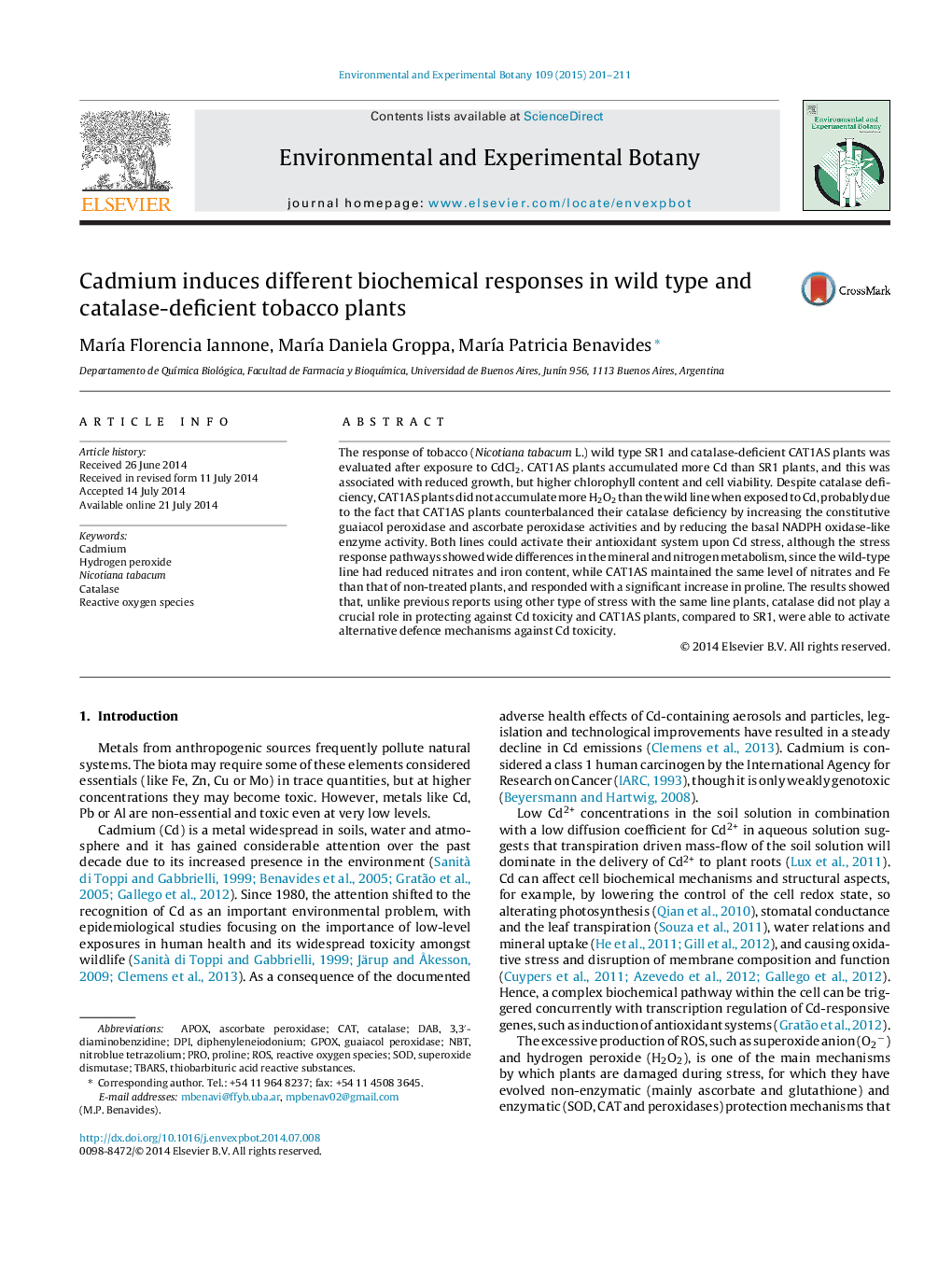| Article ID | Journal | Published Year | Pages | File Type |
|---|---|---|---|---|
| 4554334 | Environmental and Experimental Botany | 2015 | 11 Pages |
•Cd toxicity was studied in tobacco wild type and catalase-deficient CAT1AS plants.•Transgenic CAT1AS tobacco plants showed minor growth than wild type plants.•Catalase-deficient CAT1AS plants accumulated more Cd than wild type SR1 plants.•CAT1AS plants did not accumulate more H2O2 than SR1 plants when exposed to Cd.•CAT was not essential in protecting tobacco CAT1AS plants against Cd toxicity.
The response of tobacco (Nicotiana tabacum L.) wild type SR1 and catalase-deficient CAT1AS plants was evaluated after exposure to CdCl2. CAT1AS plants accumulated more Cd than SR1 plants, and this was associated with reduced growth, but higher chlorophyll content and cell viability. Despite catalase deficiency, CAT1AS plants did not accumulate more H2O2 than the wild line when exposed to Cd, probably due to the fact that CAT1AS plants counterbalanced their catalase deficiency by increasing the constitutive guaiacol peroxidase and ascorbate peroxidase activities and by reducing the basal NADPH oxidase-like enzyme activity. Both lines could activate their antioxidant system upon Cd stress, although the stress response pathways showed wide differences in the mineral and nitrogen metabolism, since the wild-type line had reduced nitrates and iron content, while CAT1AS maintained the same level of nitrates and Fe than that of non-treated plants, and responded with a significant increase in proline. The results showed that, unlike previous reports using other type of stress with the same line plants, catalase did not play a crucial role in protecting against Cd toxicity and CAT1AS plants, compared to SR1, were able to activate alternative defence mechanisms against Cd toxicity.
